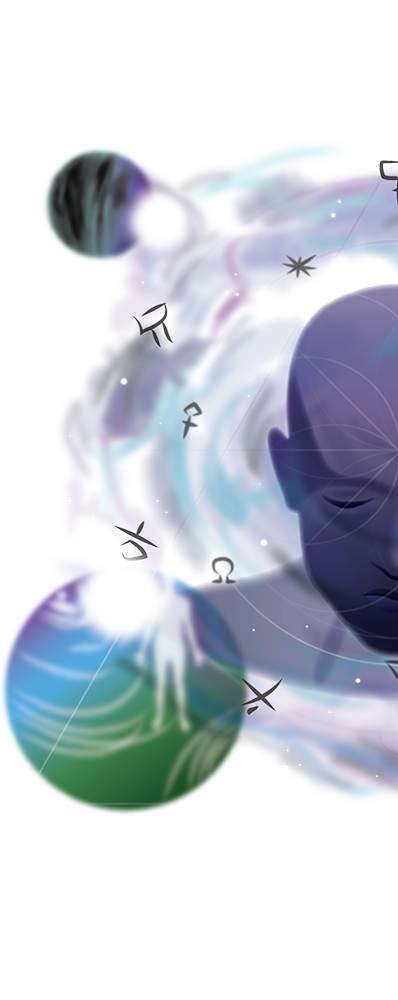By Rosemary Ellen Guiley
Copyright Visionary Living, Inc.
History has many geniuses, people whose thinking, creativity and innovation have shaped lives for centuries into the future. It may seem at first glance that geniuses are born into their calling by some combination of heritage and fate. But geniuses can be made, according to a man who has studied the works and life of one of humanity’s greatest minds, Leonardo Da Vinci. Learn to think like Da Vinci and you, too, can harness new powers of brain and mind.
Michael J. Gelb has developed a seven-step plan for daily living that he says will enable anyone to step into bigger creative shoes. Gelb, a consultant in innovative thinking, is the author of the best-selling How to Think Like Leonardo Da Vinci.
“Leonardo Da Vinci is the archetype of human potential, self-knowledge and all types of intelligence,” Gelb said. “His thinking and teaching were similar to Taoism. One of his mottos was, fix your course to a star, and follow it.”
Da Vinci (1452-1519) lived in Italy during the Renaissance, one of the most fertile creative periods in history. Titans of art, science, philosophy and literature flourished. Da Vinci stood above them all. He may be best-known for his art — masterpieces such as the Mona Lisa and The Last Supper, recognized as two of the greatest paintings ever done — but he also excelled in science, architecture and invention. He was far ahead of his time.
His ideas were so prolific it is hard to list them all. He conceived of the airplane, helicopter, parachute, three-speed gear shift, extendable ladder, folding furniture, bicycle, crane, alarm clock, hydraulic jack, snorkel and more. In addition, he conceived of numerous labor-saving devices, and an astonishing array of advanced weaponry. He made significant contributions to anatomy, botany, geology and physics.
How did all this genius pour out of a single mind in a few decades of time?
According to Gelb, a key to Da Vinci’s creativity lay in his approach to daily life. The ideal Renaissance thinker was well-rounded and open-minded. The modern Renaissance man or woman also should be well-rounded in education in both liberal arts and science. One needn’t be an authority in all fields, but should possess good, broad knowledge. Other essentials for genius-thinking: computer literacy, mental literacy, and global awareness.
Gelb has distilled Da Vinci’s personal philosophy and creative approach into the following seven principles. Embrace and incorporate them into your daily life in order to profoundly change your life:
Curiosity (Curiosita)
“Da Vinci was probably the most curious person who ever lived,” said Gelb. “He was curious about everything.”
Probe, investigate, and don’t be afraid to ask “confounding questions. Study with intensity. Keep a notebook for ideas and inspirations. Nothing is too outlandish or impossible. One seemingly outlandish idea may lead to a brilliant breakthrough.
Demonstration (Dimostrazione)
“Demonstration,” said Gelb, “is the discipline of experience.” Draw your conclusions based on your own experience, not on the word of others. One of our greatest challenges today, he said, is too much information. Our own experience suffers as a result.
Da Vinci examined everything from three perspectives or suppositions. For example, when he drew something, he drew it from three different angles. The lesson here is to examine things from different perspectives in order to see the bigger picture.
Another part of Demonstration is taking responsibility for whatever you manifest, even your mistakes.
Sensation (Sensazione)
“Da Vinci said that the five senses are the ministers of the soul,” Gelb said. “He also said that the average person lives without experiencing their senses.”
Pay more attention to how you experience the world through all of your senses. Every experience is full of lush subtleties. Most of us are so hurried, stressed and distracted that we pay little attention to our senses. We’re too preoccupied with multi-tasking.
“Savor the joy of every moment,” said Gelb. “Everything is a miracle.”
Sfumato
“Sfumato” is an Italian term that literally means “going up in smoke,” or “turned to mist.” In art, it describes the haziness in Da Vinci’s art that gives his pieces their mysterious, mystical qualities.
To embrace Sfumato means to go into the unknown, the parts of life that are ambiguous and uncertain. It also means embracing one’s own shadow side, the parts of our inner depths that are difficult or even forbidding to explore.
The artist or Renaissance person who brings forth Sfumato brings forth what lies within.
Art/Science (Arte/Scienza)
This refers to the art within science and the science within art. According to Da Vinci, the two go hand in hand. “He said that trying to be an artist without science is like setting sail without a rudder,” Gelb said.
Mastering Art/Science involves integrating right-brain thinking with left-brain thinking. It is expansive ideas that are organized into logical structure. It’s one thing to dream big, but one must organize the dream into a process of manifestation.
Corporality (Corporalita)
Corporality involves taking care of one’s physical health to maintain vigor, energy and stamina. Good physical health aids creativity and mental processes.
Corporality also involves poise and grace in all situations.
Connectedness (Connessione)
Connectedness refers to a holistic outlook, and patience in the unfoldment of processes and events. Da Vinci paid keen attention to the patterns and connections in his environment, and how one thing either profoundly or subtly affected another thing, Gelb said. He related these patterns to his ideas, and was not afraid to combine different elements into bold new patterns.
In daily life, see how different, even disparate, things and events are interconnected.
Gelb’s exploration of Da Vinci’s genius is further explored in his books How to Think Like Leonardo Da Vinci and Da Vinci Decoded. Readers are given numerous exercises and suggestions for integrating the seven principles into daily life. Gelb has also written Innovate Like Edison. His website is http://www.michaelgelb.com.









